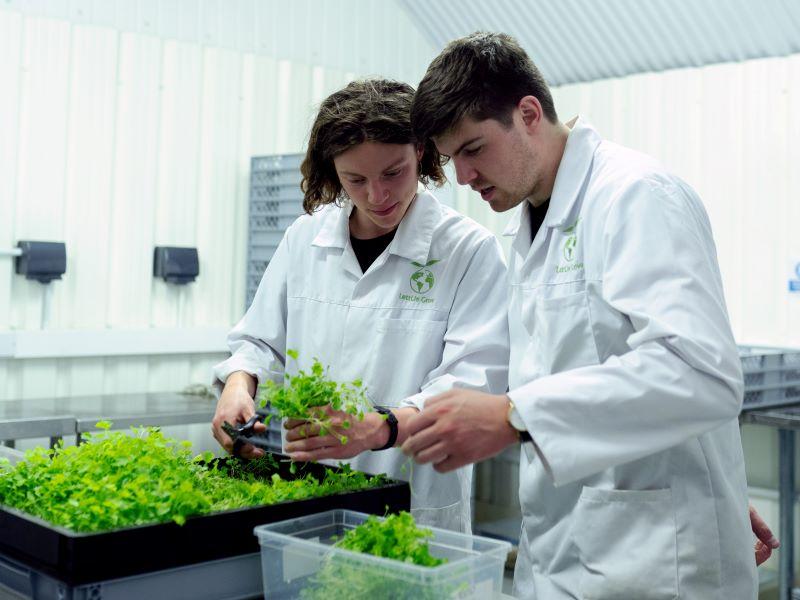We all understand the value of collaboration. New experiences and perspectives from colleagues and students help to challenge our ways of thinking, driving us to create and share knowledge in more impactful ways. But collaborating with people outside your university sphere can add equal, and perhaps even more, value.
Public engagement spans activities from inspiring audiences through talks, exhibitions or festivals; consulting through surveys, focus groups or citizen juries; or shared decision-making and working with the public as partners.
If you’re interested in public engagement but you’re not sure how to get started, here are six main considerations:
1. Aim for mutual benefit
Involving (the most relevant) public audiences in your work can be incredibly rewarding for everyone involved. It can:
-
increase the likelihood that your research translates into real-life benefits
-
provide everyone involved with new skills, networks, knowledge and experiences
-
give agency and influence to people often excluded from the higher education and research ecosystems
-
improve the transparency and accountability of your research
-
enrich your students’ learning experience with new or alternative perspectives.
Spend time at the start establishing the purpose. What are you trying to achieve? What’s in it for everyone involved? Ideally, all parties should walk away feeling as if they’ve gained something from the experience.
2. Identify who
Once you have your objective, the next step is identifying your audience. Importantly, there is no such thing as “the general public”. Yoga teachers, people with arthritis, musicians, local residents, young carers, cyclists – each group is a community formed around an interest, a place, an identity or an experience. Even if you truly believe that everyone will have a vested interest in your work, which is unlikely, the more focused you can be here, the more likely you are to achieve your goals.
3. Identify how
With your purpose and audience clearly defined, you’re ready to choose your method. Here are examples for inspiration:
-
lectures, films, exhibitions and panel events
-
websites, podcasts, apps and games
-
surveys, focus groups, one-to-one conversations and workshops
-
performances, hands-on activities and creative events
-
collaborative research, citizen science and lived-experience panels.
People often jump to the method first – “I want to make a podcast” – but this can lead to your choosing something that doesn’t work for your audience or won’t help you achieve your goal. The time, resources and expertise you have available will influence your choice here, too.
4. Plan in evaluation from the start
How will you know if your engagement has been successful? It’s not always possible to measure the impact of your public engagement – particularly if you start off small – so you may want to evaluate the design or delivery instead.
-
Design: Was the method appropriate? Did you reach your audience? Were they able to take part? Did they enjoy the experience?
-
Delivery: Did the activity go ahead? Did the people you wanted to reach attend? How many? Who were they? Did you have enough resources, time and support?
-
Impact: What changed as a result of your engagement? This might be research methods or priorities; sign-ups to an event or newsletter; new lessons or subsequent actions.
For a thorough breakdown of evaluating public engagement, have a look at our evaluation toolkit.
5. Build mutual trust, respect and expectations
Effective public engagement is often built on a foundation of honest, open and respectful communication. The people with whom you engage – whether that’s parents at a science festival, artists in a performance, or people living with dementia on an advisory group – all have knowledge and expertise that you don’t have. Their time and contributions should be valued as equal to your own.
With this in mind:
-
it’s absolutely fine to start small and learn about public engagement as you go, as long as you have respect for those involved – it can take years to build trust, particularly with large organisations such as universities, and just one bad experience to break that down
-
consider the language you use, and test materials with a critical friend in advance
-
if you’re consulting or collaborating with the public, consider ways to recognise their contribution, such as incentives, one-off payments, paid positions, fellowships, co-authorship or external acknowledgements.
6. Ask for help
Many universities have public engagement teams who can help you to develop your ideas (for example, the centre for public engagement’s support includes one-to-one advice, internal funding, and training). Most research councils and large funders have public-engagement funding and support available, too.
Looking to find out more? Here are some resources to get you started:
Emily Burns is director of the Centre for Public Engagement at Queen Mary University of London.




comment